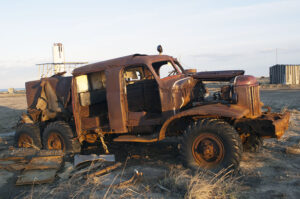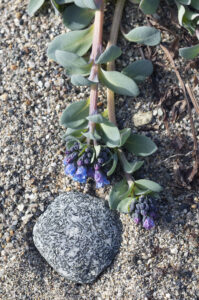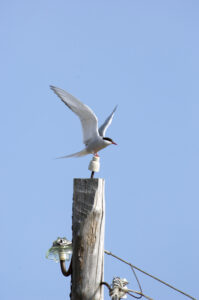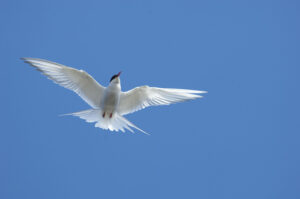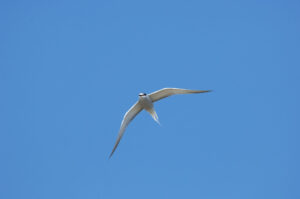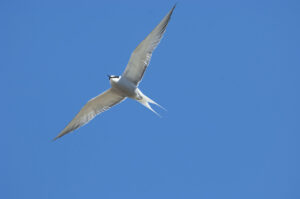Kaj Halberg - writer & photographer
Travels ‐ Landscapes ‐ Wildlife ‐ People
Siberia 2011: Caterpillar trip in Chukotka
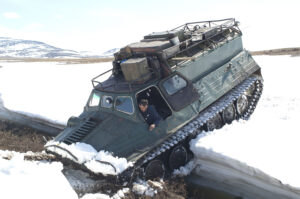
Initially, Jens intended to include four members in the expedition, but we end up being only three – the third person is Max Nitschke, who, incidentally, speaks a bit of Russian.
The purpose of our trip is to count breeding birds in specific areas, which Jens has been monitoring for several years now, to detect, whether bird populations here are stable. Many Siberian bird species are declining drastically these years, mainly because many of their roosting and feeding sites in eastern Asia have been drained and converted into shrimp farms, salt pans, or rice fields.
As almost no roads are found in the Zolotoi Khrebet (’Golden Ridge’), transportation is going to take place in a caterpillar, which Jens has hired through one of his contact persons in the town of Anadyr.
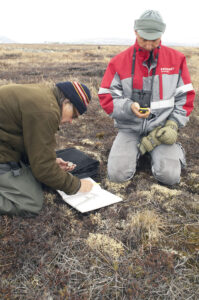
Through another of his contact persons, Jens has rented an apartment in the airport city, in one of these huge, charmless concrete buildings, which the former Soviet government was so fond of building everywhere. During the heydays of the Soviet Union, Anadyr was an important town due to the presence of a gigantic missile launch a few kilometres north of the airport city, where several missiles, armed with nuclear weapons, were aimed at various targets in the U.S. After the collapse of the Soviet Union, the whole business was covered with soil, and Anadyr’s importance vanished. Presently, only a few thousand people live here, making a living from God knows what.
Today, many of the apartment blocks are in an advanced stage of decay, but those which are still inhabited, have been somewhat beautified by being painted in bright colours. Otherwise, the whole area bears the marks of decay and indifference, in equal measures. Rubble, wires, iron pipes, oil drums, scrapped trucks, workmen’s huts, and a lot of other rubbish is ubiquitous, and nobody cares to clean up the mess.
During the Soviet Era, you just did what you were told, which does not exactly encourage personal initiative. Today, when nobody is told to do anything, it seems that nobody wants to take the trouble to clear the mess, and thus beautify the area. Several places we notice that the insolating layer around the large metal pipes, which bring hot water to the housing areas, has peeled off, causing the heat to gush into the Siberian cold. This doesn’t seem to bother anyone, so it seems that there is no lack of oil or coals.
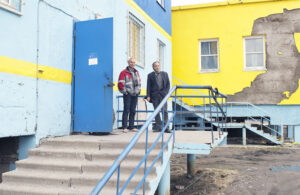
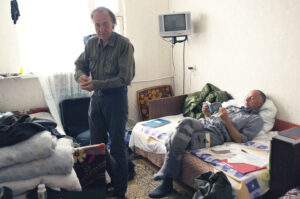
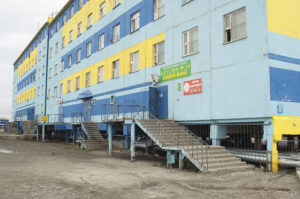
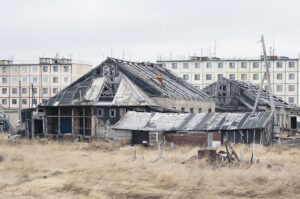
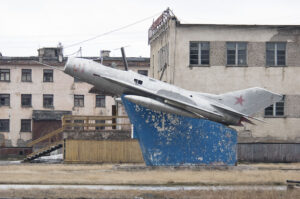
The generic and common names of the genus Phalaropus means ’coot-foot’, derived from the Greek phalaris (’coot’) and pous (’foot’), alluding to the fact that phalaropes, as opposed to most other small waders, has lobed toes, making them excellent swimmers. Incidentally, phalaris is derived from phalios (’with a white spot’).
Various duck species are also present, including long-tailed duck (Clangula hyemalis), wigeon (Mareca penelope), and common teal (Anas crecca). Snow buntings (Plectrophenax nivalis) are often found around buildings, and vega gulls (Larus vegae) use rooftops as lookout points. Previously, this species was considered a subspecies of the herring gull (L. argentatus), but today most authorities regard it as a separate species.
In the tundra further out of town, we observe other birds, such as willow ptarmigan (Lagopus lagopus), whimbrel (Numenius phaeopus), long-toed stint (C. subminuta), tundra swan (Cygnus columbianus ssp. columbianus), long-tailed skua (Stercorarius longicaudus), and bluethroat (Luscinia svecica).
Soaring over a rock, on which their nest is situated, a pair of peregrines (Falco peregrinus) emit their alarm call, when we pass by.
Abandoned iron pipes or heaps of rubbish are often home to arctic ground squirrels (Urocitellus parryii), which bark excitedly and disappear into their den, when you pass by, only to re-appear a few moments later to evaluate if the danger is over.
In the vicinity, the Alaskan hare (Lepus othus) is rather common. We observe individuals in their white winter pelt, as well as brown-spotted individuals, changing into their summer pelt. Towards the end of our stay, the majority display their brown summer pelt.
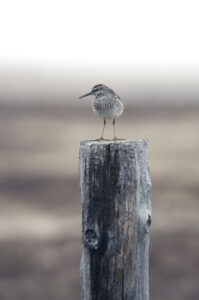
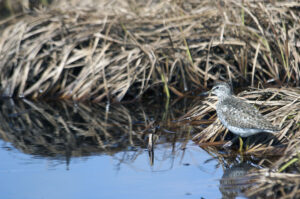
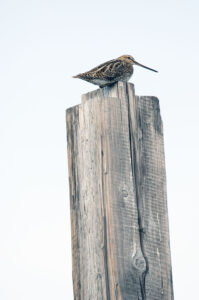


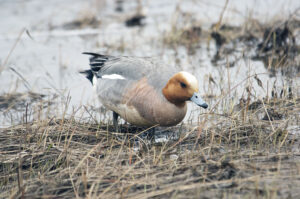
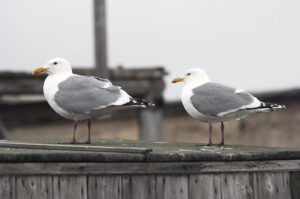
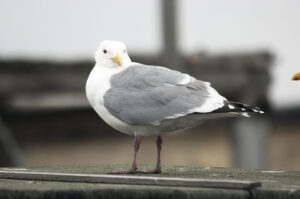

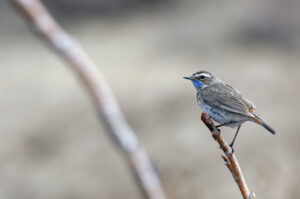
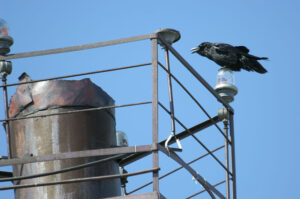
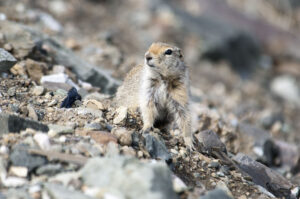
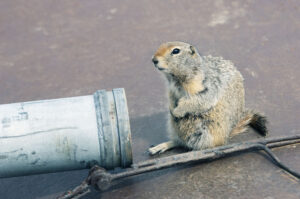
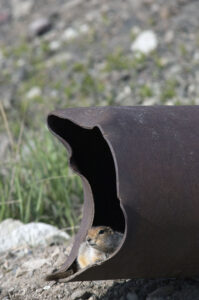
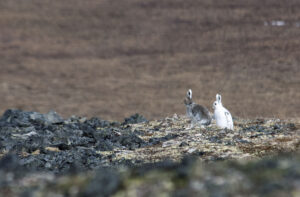

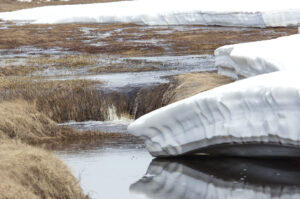
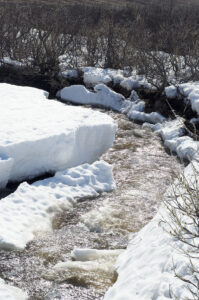
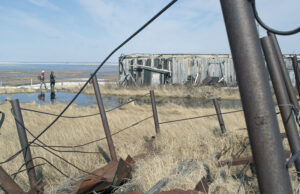
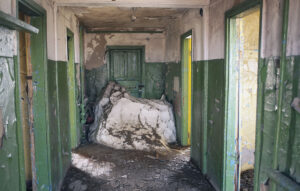
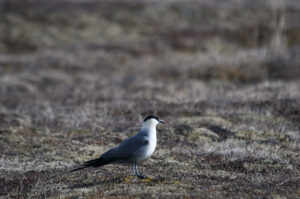
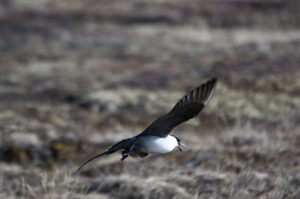
Various species of willow (Salix) are ubiquitous in the tundra. On several occasions, we observe arctic bumblebees (Bombus polaris) feeding in the flowers. Incidentally, this bumblebee plays an essential role in the pollination of the woolly lousewort. It is adapted in a way that allows it to work the spikes from the bottom towards the top (Kevan 1972).
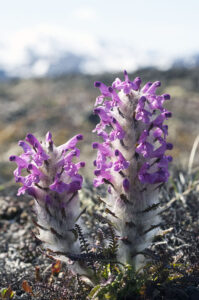
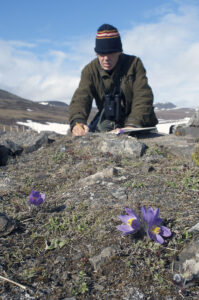
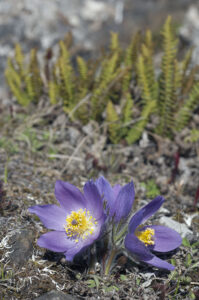
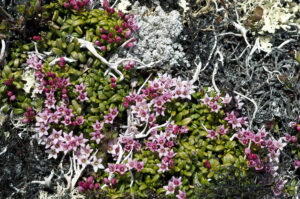
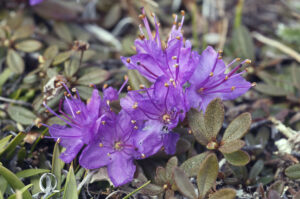
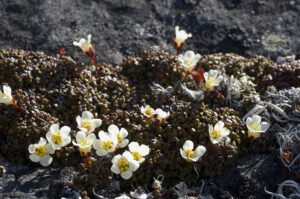
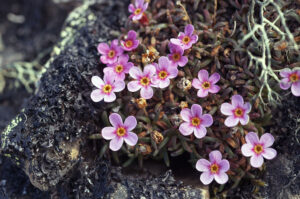

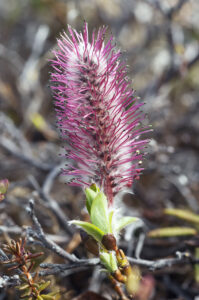

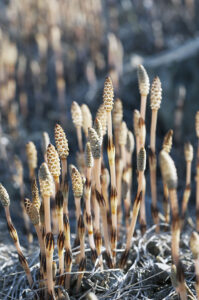
Before our departure, he hands each of us some sort of ’medal’ – a small, flat tin item with hammer and sickle and a red star, signifying that you have distinguished yourself.
We take off at a tremendous speed, the vestihud lurching from one side of the narrow gravel road to the other. At the end of the road, Sasha manages to slow down, before we have an accident, and he also succeeds in crossing a stream, bordered by snow walls, albeit with some difficulty. Triumphantly, he holds up his thumb.
”When you embark on a trip, it is customary to celebrate the crossing of the first stream by enjoying a glass of vodka,” he says. As if he hasn’t already had enough! When he leaves the vestihud, he tumbles down on the metal belt, bending a rib. This doesn’t seem to bother him – Russians in this part of the world are a tough breed.
We open one of our few bottles of vodka, which, incidentally, was supposed to be presented to some of Jens’ friends, who are employed at a lighthouse on the east coast. Now we empty a glass to celebrate our successful river crossing, whereupon Sasha, during the following fifteen minutes or so, empties the bottle entirely.
When we continue our journey, Sasha bangs his head into the windscreen several times and is now bleeding from numerous small cuts. Arriving at the next stream, he places his head on his arms and falls asleep.
An hour later he awakes, and we carry on with our journey. Several of the streams are covered in snow, and we must make a detour to cross them. On a tall scaffold near an abandoned gold diggers’ camp, a pair of ravens have built their nest, which contains four small, naked chicks.
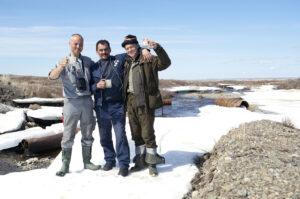
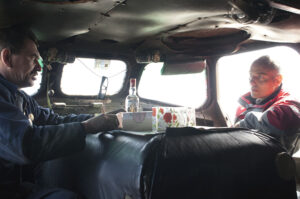
”I’ll get water for coffee,” says Sasha, leaving in the vestihud. Time goes, but he doesn’t return, and there is nothing else to do but go to bed. The following morning we discuss what to do. We decide to give Sasha some more time, and in the meantime we ascend a nearby hill, where we find a few breeding pairs of great knot (Calidris tenuirostris). On a rockface, a pair of rough-legged buzzards (Buteo lagopus) have built their nest.
While we are up here, we spot the vestihud on the opposite side of the river, approaching our camp. Back in camp we learn that Sasha had fallen asleep in the caterpillar. Now he is suffering from a serious hangover, which can only be repaired with vodka. We only have three bottles left, and two of them are reserved for Jens’ friends out east. Somewhat hesitatingly, we hand him the third bottle.
We spend another day on the Uglovaya Mountain to give Sasha time to recover. Finally, when he becomes sober, he turns out to be a very pleasant and easy-going person, whom we all come to appreciate a lot.
The weather is lovely – sunny, but with a breeze to keep the mosquitos at bay. Near our camp, we find a nest of sandhill crane (Grus canadensis), and passerines include red-throated pipit (Anthus cervinus) and Beringian yellow wagtail (Motacilla tschutschensis). In the evening, the cranes perform their courtship display, gliding after one another with dangling legs, trumpeting loudly.
Recently, the sandhill crane has expanded its range far west into Siberia, and the Russian population may today exceed 10,000 birds. Traditionally, Russian hunters do not shoot sandhill cranes, but in later years they have become so numerous that some hunting of the species takes place.
The cranes are omnivorous, eating whatever they can find: roots, insects, mice, and eggs and young of numerous species of birds. Thus, the beautiful birds have become a threat to Siberian breeding waders, many of which are already in dire straits.
Further information on this crane is found on the page Animals – Birds: Sandhill cranes are a threat to breeding birds.
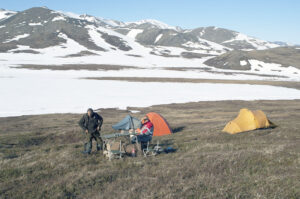
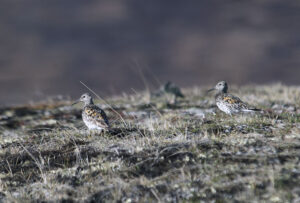
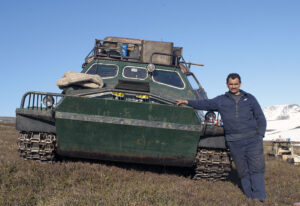
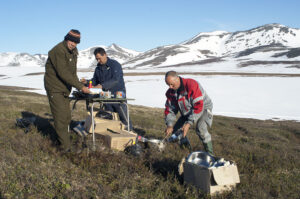
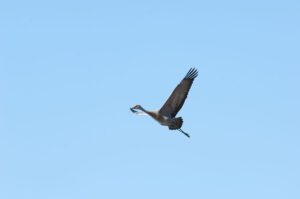

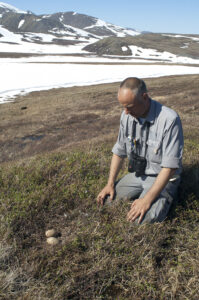
Naturally, the materials are worn out quite fast. As we are driving through the gorgeous landscape, we suddenly hear a tremendous rattling noise. A link in one of the caterpillar belts has broken, and most of the belt is lying in the grass. Jens and Max carry the heavy belt back to the caterpillar, where Sasha repairs it in about half an hour.
At first sight, parts of the endless Arctic landscape seem completely virgin. But appearances are deceptive, and everywhere Man has left his stamp. Empty oil-drums lie scattered almost everywhere, and in many places, the remains of buildings or scaffolds point somewhat wantonly towards the sky. Rows of poles, with power lines dangling like spaghetti, are drawing lines across the landscape.
One of the ugliest sights you can imagine is a deserted gold-digging camp – sheds built helter-skelter; enormous gravel heaps; broken-down machinery; tracks of caterpillars everywhere, like scars in the landscape. Above a camp in the Schirnaya Mountains, which has not yet been completely abandoned, we find a level place to pitch our tents, with a fine view. It is too early in the year to dig for gold, so we have the whole area to ourselves.
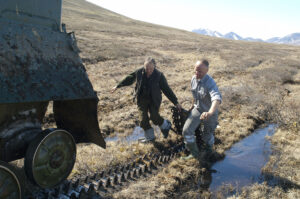
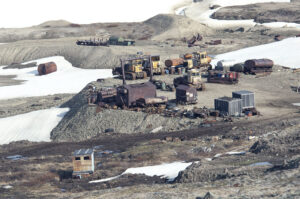
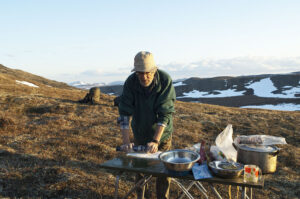
Among the rocks, we observe several northern pikas (Ochotona hyperborea). More than twenty species of these small, rabbit-like animals live in Central Asia, the Himalaya, and North America.
Our next camp is on a gorgeous spot, with a fine view over the Keimletkuulveem River. In the far distance, we can see the Pacific Ocean, where great icebergs have been washed ashore.
Siberian anemone (Anemone sibirica) and mountain avens (Dryas octopetala) are common here, and short-horn steer’s-head (Dicentra peregrina) grows on gravelly spots. Observed birds include long-tailed skua, willow ptarmigan, and tundra bean goose (Anser serrirostris).
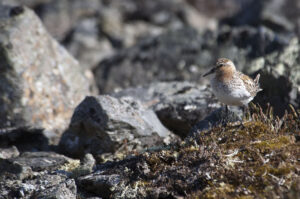
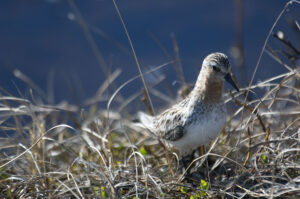
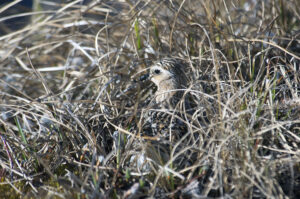
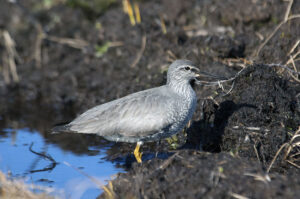
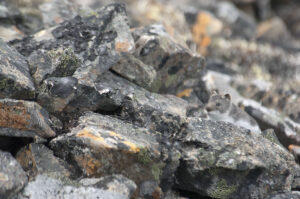
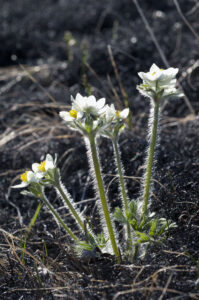
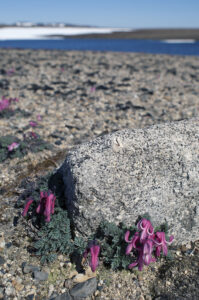
As we approach the coast, a brown bear (Ursus arctos) runs in front of the vestihud for some time, before jumping down a steep slope to the beach. Later we find its tracks in the sand, along the shore. A grey whale (Eschrichtius robustus), 12 m long, has been washed ashore, a swarm of Vega gulls (Larus vegae) and glaucous gulls (L. hyperboreus) gathered on it. The carcass stinks awfully, but this doesn’t seem to bother the gulls.
This place is the beginning of a sandspit, named Kosa Ruskaya Koshka (‘The Russian Cat’s Tail’), stretching c. 20 km southwest. We camp in an area, in which Jens a few years earlier had counted six or seven pairs of the rare spoon-billed sandpiper (Eurynorhynchus pygmeus), but this year we find only a single pair.
The area is teeming with birds. We observe a pair of western sandpiper (Calidris mauri), which is quite rare in Siberia, and other birds include Sabine’s gull (Xema sabini), emperor goose (Anser canagicus), bar-tailed godwit (Limosa lapponica) and many others.
A barn swallow (Hirundo rustica) flies over – a rare bird in these parts. Most of the day, a house sparrow (Passer domesticus) sits on and around the vestihud, and Sasha enjoys himself feeding it bits of bread.
An ice-cold fog drifts in from the sea, and to keep warm we make a huge fire from drift wood. In the embers, I bake chapatis, and we heat water for tea and coffee – the water is a bit ochre-coloured, but never mind!
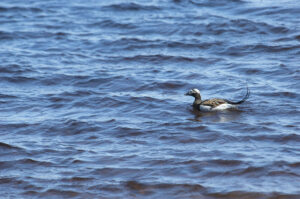
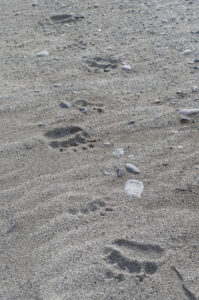
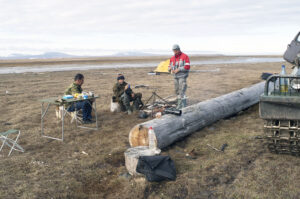
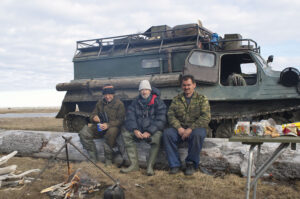
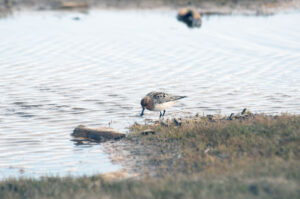
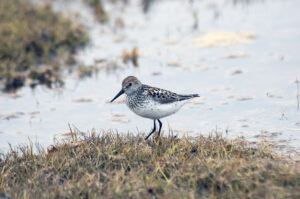
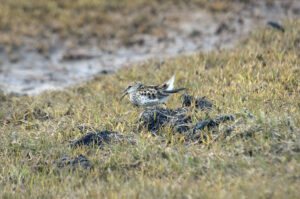
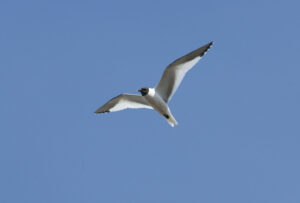
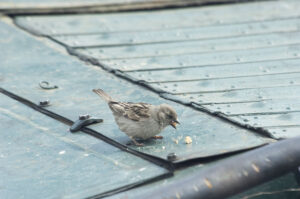
Initially, Kosa Ruskaya Koshka is very narrow, but towards the end it widens out, creating an area, c. 4 x 4 km, comprising a surprising variety of habitats, including heathland, dominated by crowberry (Empetrum nigrum), sandy areas, dominated by a grass, which somewhat resembles lyme grass (Leymus arenarius), littoral meadows with channels and water holes, and finally sandy beaches.
Near the tip of the spit is a cluster of houses around the lighthouse. We are received very courteously by the personnel, all of whom Jens has met on his earlier visits. Their boss is Andrei, an elderly man with a large, grey beard. Then there is Leonid, his wife, and a man with a disfigured face – the result of an encounter with an angry bear.
After handing over the remaining bottles of vodka, we are invited for dinner. The dinner party is quite a gay affair, with lots of talking, eating and drinking – and we are also dragged outside to admire Andrei’s old motorbike.
During the following days, we count breeding birds in the area around the lighthouse. Besides several species of waders, we find Sabine’s gull, arctic skua (Stercorarius parasiticus), several colonies of arctic tern (Sterna paradisaea), and a few pairs of Aleutian tern (Onychoprion aleuticus), the call of which is rather peculiar, quite sparrow-like.
A pair of ravens have built their nest in the radio tower. When Max climbs up to check the nest, one of the ravens circles above him, calling raucously.
Max and I study the migration of seabirds along the shore. Huge gatherings of common eiders (Somateria mollissima) are resting on the sea, together with long-tailed ducks, Pacific divers, and a single harlequin duck (Histrionicus histrionicus). In the course of about an hour, c. 100 horned puffins (Fratercula corniculata) and c. 10 tufted puffins (F. cirrhata) migrate west.
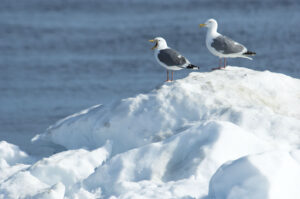
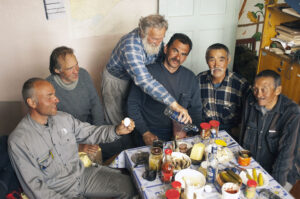
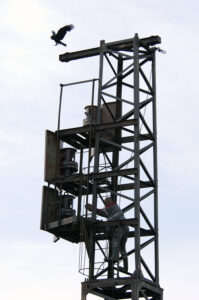
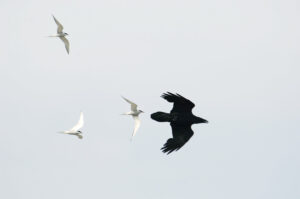
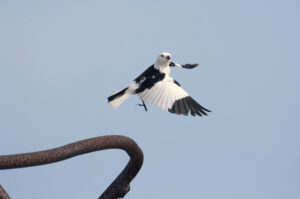
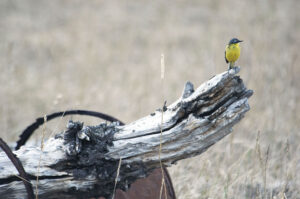
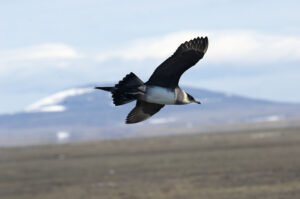
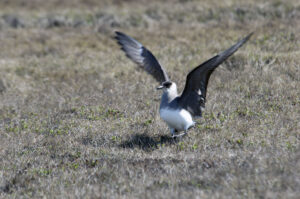
Today, the buildings are empty and deserted, the huge oil tanks are slanting, and rusted machines, trucks, wires, and a collection of other items are scattered all over the landscape.
A collection of pictures, depicting this decay, may be studied on the page Decay.
The former human population has moved, and the area has been taken over by numerous birds, which do not at all mind breeding in this mess. Here are colonies of arctic tern and Aleutian tern, and we also observe breeding Temminck’s stint, western sandpiper, red-necked stint, and ringed plover (Charadrius hiaticula).
In one of the tiny waterholes, we observe a sub-adult Ross’s gull (Hydrocoloeus rosea), and around the tip of the spit about 10 beluga whales (Delphinapterus leucas) are swimming back and forth, very close to the shore.
It is now time to return to the airport city, and the vestihud is strained to its limits. Back in town, we say goodbye to Sasha, and a friend of his brings us to the airport hotel.
”She’s tough!” says Jens, referring to the female receptionist, whom he has met on his earlier trips. Max commences negotiating with her – and today she is smiling and very helpful. We get a triple room, and later she brings tea and biscuits to our room.
”She has never done anything like that before!” says Jens, astonished. He and I agree that maybe she has a crush on Max, who is a handsome fellow.
”Nonsense!” says Max, a bit embarrassed.
